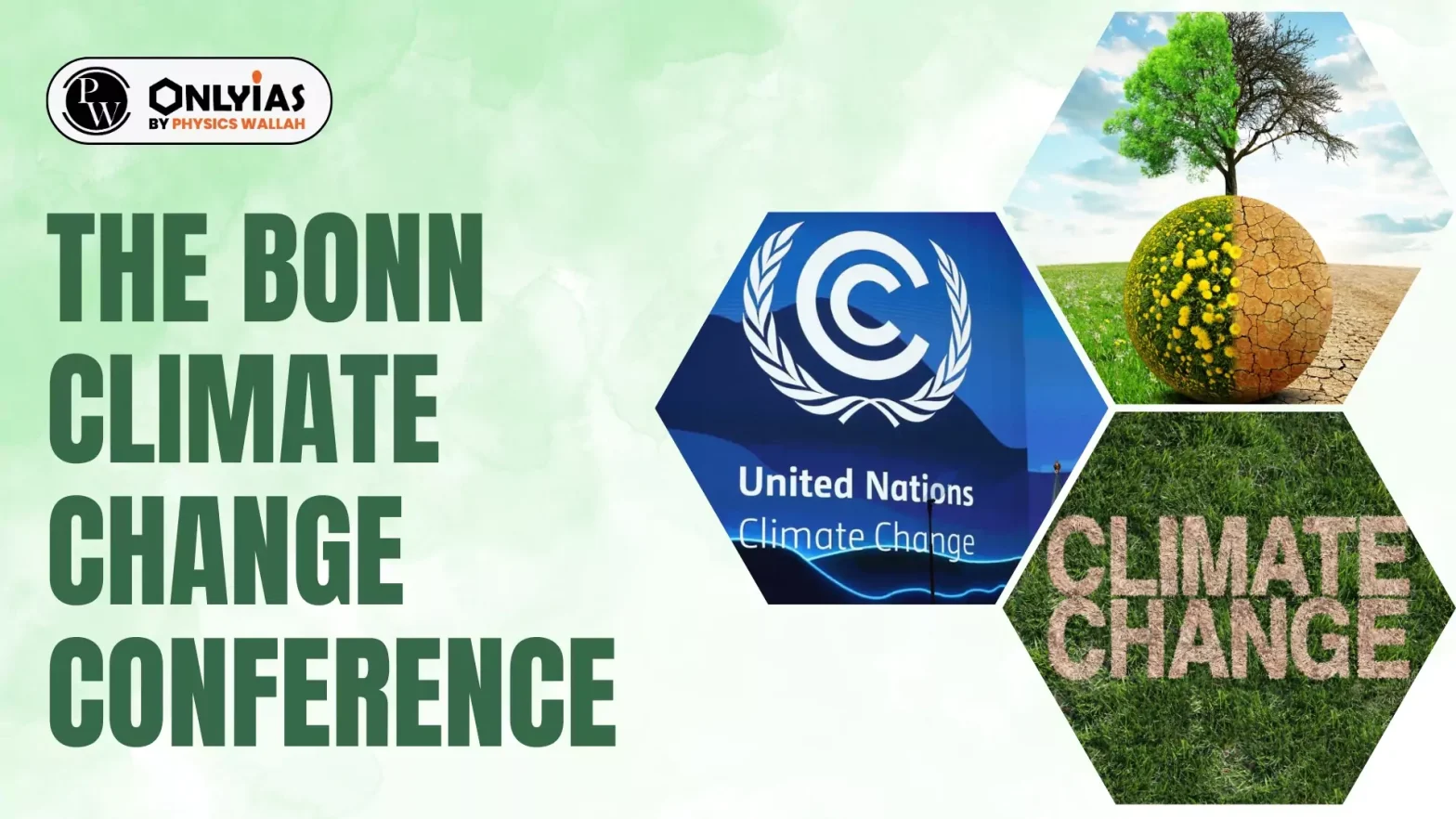A two weeks long Bonn Climate Change Conference was recently concluded with the release of an input paper on the New Collective Quantified Goal on Climate Finance.
- The paper is likely to be developed into a formal negotiating draft that can be agreed upon at COP29 of UNFCCC in Baku, Azerbaijan.
A New Collective Quantified Goal on Climate Finance
The New Collective Quantified Goal (NCQG) is the increased Target for mobilizing climate finance upwards of $100 billion for the post 2025 period mandated by the Paris Agreement of 2015. The increased target, or the for the post-2025 period, is to be finalised this year in COP 29.
- Bonn Meetings: Hosted a technical expert dialogue (TED10) to enable in-depth examination of the elements of the New Collective Quantified Goal on climate finance (NCQG)
- Demands and Suggestions:
- India Proposal: India has formally proposed that developed countries should commit themselves to providing at least $1 trillion every year after 2025.
- Arab Countries: The Arab countries have said this figure should be at least $1.1 trillion.
- African countries have demanded $1.3 trillion.
Enroll now for UPSC Online Course
Climate Finance Architecture
- Obligation and Mobilisation:
- Mandate: The UNFCCC and Paris Agreement in accordance with the principle of “common but differentiated responsibility and respective capabilities” mandates the countries listed in Annexure 2 of UNFCCC ie. 25 countries and the European Economic Community as being responsible for providing climate finance to developing countries to fight climate change due to their Historical responsibility.
- Mobilisation: The developed countries promised to mobilise $100 billion every year from 2020 towards this purpose.
- Progress: An Organisation for Economic Cooperation and Development (OECD) report claimed that this $100 billion target had been met for the first time in 2022.
- Need:
- Inadequate Financing: As per an UNFCCC assessment, developing countries needed about $6 trillion between 2023 and 2030 just to implement their promised climate actions.
- Facilitating Climate Actions: Financing Mechanism is needed for facilitating mitigation or adaptation works, for collecting and reporting climate data on a daily basis. Developing countries have a large capacity gap for this kind of work.
- Adaptation needs: The developing countries require between $215 billion and $387 billion annually.
- Achieve Net Zero: The global transition to clean energy needed an investments of about $4.3 trillion every year till 2030, and about $5 trillion annually after that till 2050 to reach a global net zero status.
- Challenges:
- Shifting responsibility: Developed countries are not enthusiastic about keeping their promise and is often seen to be shifting their responsibilities arguing that many other countries are now economically better off than in the early 1990s
- Burdensome: The developed countries argue the onerous nature of the requirements that are too huge for the original group of listed countries to meet.
- Needs Inclusivity: China, the world’s second-largest economy, oil-rich Gulf countries, and others like South Korea are not part of Annexure 2 but are significant contributor to the climate change.
- Cutting aid: Many rich nations have been cutting their aid budgets, citing fiscal pressures, even as developing countries struggle with debt that makes spending on climate action harder.
- Way Forward:
- Clarity on Climate Finance: Developing nations demand clarity on what constitutes climate finance, insisting that development finance should not be counted as climate finance and that funds should not be provided as loans.
- Reflect new realities: Provision of climate finance needs to be extended beyond just developed countries to include certain well performing developing countries also to finance the climate goal and reflect ‘new economic realities.
- Set mandates: Developed countries should collaborate, set the mandates, raise resources, and define the authorising environment and policy priorities for development co-operation in their capacity as a donor governments.
United Nations Framework Convention on Climate Change (UNFCCC)
The UNFCCC is the United Nations entity established in 1992 tasked with supporting the global response to the threat of climate change.
- Membership: The Convention has near universal membership of 198 Parties.
- Parent Treaty: The Convention is the parent treaty of the 2015 Paris Agreement 1997 Kyoto Protocol
- Paris Agreement:
- The main aim of the Paris Agreement is to keep the global average temperature rise this century as close as possible to 1.5 degrees Celsius above pre-industrial levels.
- The objective: It is to stabilize greenhouse gas concentrations in the atmosphere at a level that will prevent dangerous human interference with the climate system, in a time frame which allows ecosystems to adapt naturally and enables sustainable development.
- The secretariat: It is located in Bonn, Germany.
|
Check Out UPSC CSE Books From PW Store
Climate Finance
Climate finance refers to local, national or transnational financing drawn from public, private and alternative sources of funding that seeks to support mitigation and adaptation actions which will address climate change.
- The UN Convention, the Kyoto Protocol and the Paris Agreement call for financial assistance from Parties with more financial resources (developed countries) to those that are less endowed and more vulnerable.
- Principle: The funds are mobilised according to the principle of “common but differentiated responsibility and respective capabilities” whereby developed countries are to provide financial resources to assist developing countries in implementing the objectives of the UNFCCC.
- Supports:
- Mitigation: Large-scale investments are required to significantly reduce emissions.
- Adaptation: Significant financial resources are needed to adapt to the adverse effects and reduce the impacts of a changing climate
- Financial Mechanisms:
- Global Environment Facility (GEF): It has served as an operating entity of the financial mechanism since the Convention’s entry into force in 1994.
- Green Climate Fund (GCF) established at COP 16, in 2010.
- Funds: The Special Climate Change Fund (SCCF) and the Least Developed Countries Fund (LDCF), are managed by the GEF
- The Adaptation Fund (AF) was established under the Kyoto Protocol in 2001.
|
![]() 15 Jun 2024
15 Jun 2024

